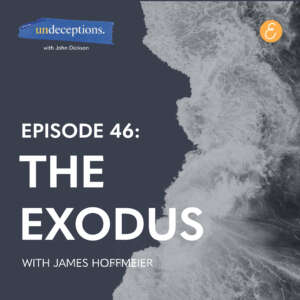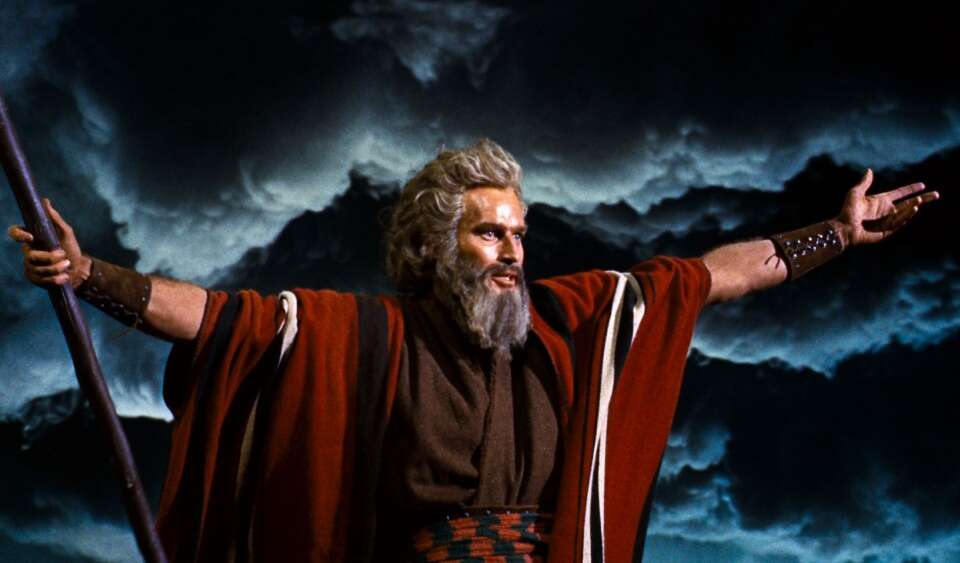Is the Exodus fact or fiction?
The archaeological hints that the Exodus really happened
The Exodus is one of the most epic stories in the Bible. It’s a favourite of Hollywood, re-enacted countless times, from Charlton Heston’s Moses telling Yul Brenner’s Pharoah to “Let my people go” in the 1956 film The Ten Commandments, to Jim Carrey testing out his godly powers bestowed on him by Morgan Freeman and parting the red sea in a bowl of tomato soup in Bruce Almighty.
But opinions vary wildly about the historicity of the famous story about Israelite enslavement and departure from Ancient Egypt. The Exodus story is played out in the Old Testament’s Book of Exodus, and includes iconic moments including the 10 plagues of Egypt, the famous line “Let my people go!”, the parting of the red sea and Moses receiving the Ten Commandments from God on Mount Sinai.
So, did any of it really happen?
John Dickson spoke to Egyptologist and Biblical scholar Professor James Hoffmeier for an episode of Undeceptions, part of the Eternity Podcast Network. He is Professor Emeritus of Old Testament and Ancient Near Eastern History and Archaeology at Trinity Evangelical Divinity School and has penned more than 15 books and even more scholarly articles on ancient Egyptian and middle-eastern history. Hoffmeier says Egyptology is really important for historical Christianity, given that the most important events of the Old Testament take place in Egypt.
“If you think of the story of the Bible as a drama that’s being played out on a stage, what archeology provides – and Egypt certainly does this for the Exodus story – is the props on the stage for the drama to be acted out,” — Professor James Hoffmeier.
“Whether you’re talking about Moses and the Exodus or the events of the Israelites entering into a covenant relationship of God that took place in Sinai … or moving forward 3000 and more years, the only place that Jesus traveled other than the Holy land was Egypt. So at both ends of the biblical spectrum, we find Egypt playing a significant role.”
Hoffmeier says that while the evidence for the Exodus exists almost entirely within the Bible itself, that’s not a reason to dismiss it.
Since 1994, Hoffmeier has directed the North Sinai Archaeological Project, devoted to researching and studying Egypt’s frontier during the ‘New Kingdom’ and how the area may relate to the Israelite exodus from Egypt. He says there is a long debate in archaeology circles about the value of the Bible as an historical document.
“Right now the field is probably quite well split between those who I would call ‘biblical minimalists, who treat the Bible as having very minimal historical value or benefit and ‘maximalists’ like me, who use the approach that you treat something as innocent until proven guilty. In other words, I would take a statement by an ancient writer, be he an Egyptian writer, a Babylonian writer or a Hebrew biblical writer and accept that as a generally true statement unless there’s evidence to contradict it.”
The interplay between ancient texts and artifacts, and the weight of importance given to each is another factor.
“If you think of the story of the Bible as a drama that’s being played out on a stage, what archeology provides – and Egypt certainly does this for the Exodus story or the Joseph story – is the props on the stage for the drama to be acted out,” says Hoffmeier.
“Artifacts are very important, but then they tell their own story. We still largely rely on texts. And the problem is that for the western-minded historian (or an historically-minded westerner!) is that we tend to think very much in Western ways about history. Whereas for people in the ancient Near East, there was no bifurcation between history and religion. No separation of church and state. So when they – the Egyptians, the Babylonians, the Assyrians – wrote history, it was well integrated into their religious understanding. You cannot separate the two and say, ‘We’re only looking at the historical texts’, because they’re integrated in the theistic worldview of the time.”
Outside of the Bible there are very few texts that point to a real Exodus, says Hoffmeier. The Merneptah Stele is one of them.
“It’s a large slab of stone – the Egyptians called them a ‘stele’ – with usually a royal inscription on it. These often contain historical records of military campaigns of the King, where he fought, what temples he built. One king who is well-known in biblical archaeology is King Merneptah. He was the 13th son of Ramses II – who lived so long he outlived his first 12 sons, so lucky number 13 it was! The stele is now in the Cairo Museum, discovered in 1896 … it contains the first known reference to Israel outside of the Bible.”
So the Egyptians not only recognised their presence, but depicted them. — James Hoffmeier
“As far as I know, it remains the only reference to Israel in an ancient Egyptian text.”
Hoffmeier says the Merneptah Stele is particularly important because “it tells us that by the year 1208BC, there was a people group living in the land of Canaan called ‘Israel'”.
Before 1208BC, Hoffmeier says there is some evidence that “Semites” – lived in Egypt as “foreigners”, somewhere between Egypt’s Middle Kingdom (approx 2030 – 1650 BC) and the New Kingdom (approx. 1570 – 1069 BC).
“Prisoners of war were brought back from military campaigns and the like,” says Hoffmeier. “So you have these foreign Canaanites, Syrians and Semites … and they stand out in reliefs or paintings in Egypt on tombs etc because they have blonde hair. Foreigners are not depicted in the same way as Egyptians, and Semites typically have scruffy beards and so on. So the Egyptians not only recognised their presence, but depicted them.”
Whether there is evidence that Israelites were enslaved by the Egyptians is a different question again, says Hoffmeier, and can be answered in two parts. Geographically, places like Ramesses and Pithom – said in the Bible to be places constructed by the forced labour of the Israelites – did exist around the 13th century BC, known from other Egyptian texts. As for forced labour, Hoffmeier says it was well-known treatment of prisoners of war.
 “There is textual evidence to point to this practice,” he says.
“There is textual evidence to point to this practice,” he says.
“I think the Hebrews as a people group, living in Egypt, were being treated in much the same way as prisoners of war were treated in Egypt.”
It’s plausible. — John Dickson
Many scholars claim that Moses is an entirely literary fiction. Hoffmeier isn’t entirely convinced. And while, again, there’s not much outside the Bible, what is possible is to decide whether a figure like Moses could have existed.
Looking again around the 13th century BC, Pharoahs would take promising youth from their military campaigns and educate them in Egyptian institutions.
“We have texts that talk about Moses III in the 15th Century BC taking back princes of vassals in Canaan and Syria, and taking them to Egypt, where they would be educated in an institution called (translated to) ‘The Royal Nursery’ – they would call themselves a “Child of the Nursery”.
Hoffmeier says there are historical texts that use the term “Child of the Nursery” as part of a type of ‘resume’ – a point of pride that a person would include in his list of achievements. The tomb of one such ‘child of the nursery’ – Abdiel or ‘Aper-El’ was excavated in 1980 in Saqqara, Egypt. He was a Semite living around the 14th century BC who rose to be an Egyptian Vizier (like a prime minister).
“We’re within striking distance of Moses, who was educated in the royal court. It’s the sort of thing that shows what is described of Moses and the tradition that he was trained in – the wisdom of the Egyptians – and that that aspect is not far-fetched. This sort of thing did happen.”
Dickson notes that very little in the period of the Exodus is proven. “But it’s plausible,” he says.
But how can a self-respecting historian think that things like the ten plagues of Egypt as recorded in the Old Testament – the swarms of locusts, frogs and flies, the mass death of livestock and the turning of the water of the Nile into blood – actually happened in the real world?
“There is a radical difference between the modern scientific worldview that dominates western thought versus an ancient theistic worldview where everything is viewed through the lens of deity,” says Hoffmeier. “Everything then was explained through a theological, analogic way of understanding the world. Like the sun god who actually pushes the sun across the sky.”
And there are also natural phenomena that might help us read the “miracles” in a different way. “There are present locust hordes in Somalia, in Kenya. It’s a current problem, right now. Locusts swarm and destroy things. And we don’t call those things a miracle. They actually happened. Perhaps the miracle is that they are removed at the time when God ordains it. But again, I’m trying to understand this from the theistic worldview of the Egyptians and the Hebrews, not on what we might say or write today.
“I don’t think there’s anything amongst the plagues that some people have not been able to find some sort of either scientific or phenomenological explanation for them.”
As for the parting of the red sea? Well, you’re just going to have to listen to the podcast episode for that one!
Email This Story
Why not send this to a friend?



